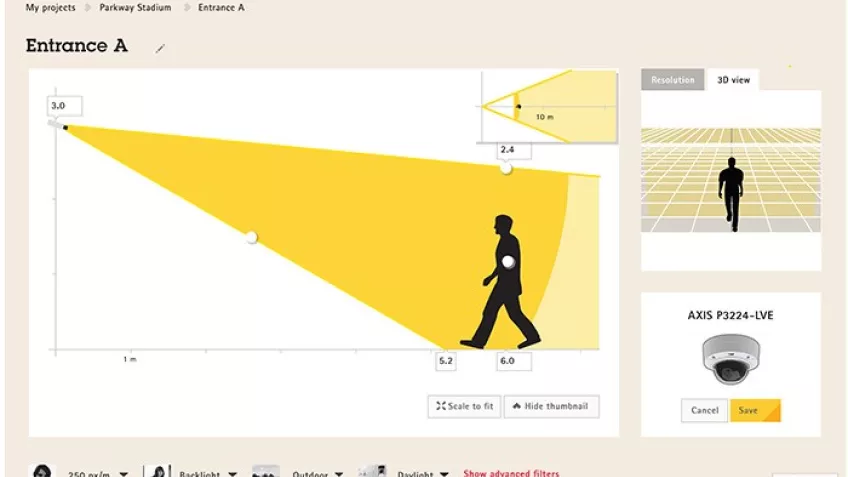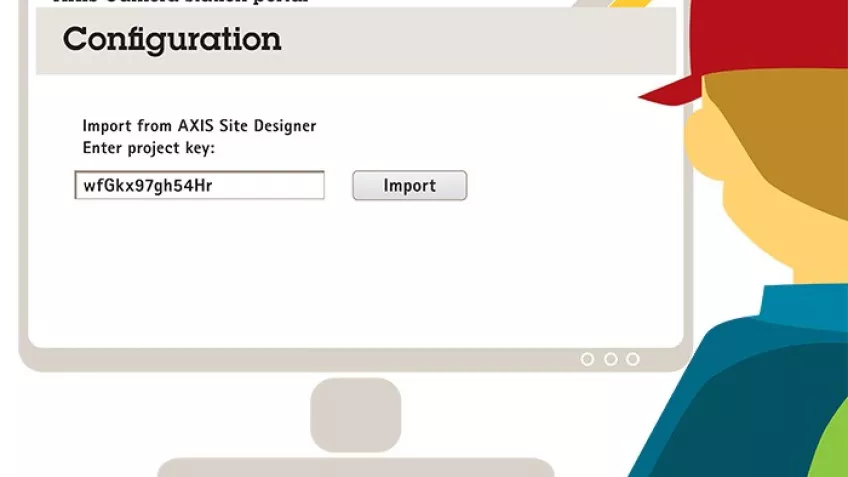
Every element of the surveillance system lifecycle – from the initial design through implementation and configuration, to ongoing maintenance – presents challenges for system integrators, and involves multiple tools as extensive human labor. Setting, managing, and meeting prospect and customer expectations is critical throughout the sales and business development process and in building relationships that will deliver value over the long-term.
The numerous processes needed in customer installations: pre-configurating hardware, assigning IP addresses, allocating resource, installation and status alignment throughout, to name a few, demonstrate the complexities system integrators need to address. With every link in the chain, you’re further increasing the chances of encountering problems such as human errors, accidental damage, or miscommunication, each of which can affect the customer relationship. By combining the management of all these requirements into one central platform, management can be simplified.
AXIS Camera Integrator Suite is our solution specifically designed to assist in the critical elements of the solution lifecycle. Here we explore how it maps to the key challenges facing system integrators.
Meeting the specific challenges of integrators
While the AXIS Camera Station video management system itself is ideal for environments such as schools, manufacturing sites and retail stores - giving customers complete control over their premises and surveillance solution - AXIS Camera Station Integrator Suite is a set of tools providing new possibilities for a system integrator to effectively manage customer installations throughout the complete lifecycle.
Designing the right system from the outset

In sales situations it’s essential to design the right system for an individual customer from the outset. Subsequent changes to design can be time-consuming and, potentially, costly. Close collaboration at the design stage makes the whole project more tangible, improving the customer’s understanding of the system, which in turn facilitates the sales process.
Using Axis Site Designer, one of the tools in Axis Camera Station Integrator Suite, the sales person visits the end-customer location and together they work out the design on site in close collaboration. This makes it easier to resolve questions about which is the right solution for the given requirements, such as camera selection, mounting accessories, and storage options.
Furthermore, it is possible even at this early stage to configure the entire system with specific camera names, resolutions, retention times, and to add notes or write down detailed instructions for the installer to clarify any additional requirements.
When the design is completed and the customer is satisfied, installation instructions and a bill of materials are automatically generated and shared. In this way, the chances of any aspect of design and configuration being ‘lost in translation’ are eradicated.
Seamless installation and accurate, automated configuration

Manual configuration is a time thief and potential source of errors (and potential subsequent customer dissatisfaction). By automatically importing all configurations from Axis Site Designer into the VMS errors are kept to a minimum while the installation time is drastically reduced. If necessary, however, configurations can always be set or changed manually.
Thanks to the improved communication between customer, integrator and installer, the system is much more likely to perform as intended in the original design, making the end-customer happy while saving a lot of time and effort for the installer. And when using a third-party installer, clear instructions and automated VMS configurations are particularly beneficial.
Testing and verification to ensure system operation

Efficient, accurate system installation is one thing: full system operation under load and different scenarios is another. Once installation is complete, the integrated verification tool performs an on-site system verification to ensure everything is working properly. The test application in AXIS Camera Station simulates bandwidth consumption and storage needs during different operational conditions. After the verification test is run, all documentation is saved and handed over to the end-customer.
The first run is in normal “current day-light” operation mode to verify that the installation is working as intended. Thereafter the system is tested with all cameras in simulated “night mode”. The night simulation test will verify that there is sufficient bandwidth during low-light operation when noise levels are higher and more bandwidth is needed. Finally, AXIS Installation Verifier performs a stress test by steadily increasing the data volume generated in the system until the first bottleneck is found. This will reveal the system spare capacity and indicate if system improvements are needed. The information is summarized in a report that will show if the system is both scalable and properly installed.
Helping customers get the most from the system
At some point, customers will need to operate and manage the surveillance system themselves. Helping them do so through comprehensive training and supporting documentation is an essential aspect.

After the verification test is run, all documentation is saved and also handed over to the end-customer. In addition to a post-sales report, the documentation forms the basis for future reference and system status follow-up. It can also be useful for troubleshooting, planning additions to or expansions of the system as well as for resolving any dispute between the installer and customer about whether the system was changed in any way after it was handed over. The system configurations, camera selection, storage etc., are saved and all documents and reports can be used to educate the end-customer on their system.
Easy or ease of maintenance of your customers' installations
AXIS Camera Station System Health Monitoring can easily be enabled in AXIS Camera Station and is used for regular system installation status checks. It enables the integrator to monitor all their end-customer installations and get status up-dates on cameras and servers, reducing the need for needless on-site visits, saving time and money.
From prospect to loyal customer, delivering value across the lifecycle
In creating and building valuable, long-term customer relationships, AXIS Camera Station Integrator Suite brings multiple benefits to integrators and their customers throughout the complete lifecycle. The most appropriate solution is designed and sold; system implementation is faster and more accurate; maintenance is simplified; new business opportunities become apparent and, ultimately, relationships between integrator and customer are strengthened. The very definition of a win-win.
